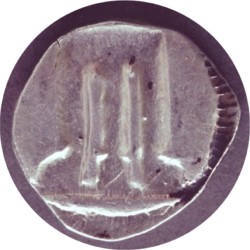Heros from the Strait of Messina
Rhegion' s Achilles and Ajax (?) -- and Silver Litra

These heroic bronzes (7' tall) are on display at the Museo Nazionale di Reggio Calabria. They were recovered from the wreck of a Greek ship in 1972 off the Strait of Messina. Speculation based on scholarship [Heros from the Sea, Satrioni and Paoletti (eds.), 1995] suggests the following: The ship carrying the bronzes was on its way from Delphi to Tarentum and Syracusa during the 2nd C. BCE when it succumbed to a violent storm (the Whirpool of Charybdis?); The statue left is from the workshop of Phidias and was created about 460 BCE as Achilles; The statue right is the Ajax of Polyclites, 430 BCE. My digital creation above has transported the heros back to their orginal placements in Delphi, Greece. The Litra presented below was likely to have been in circulation at the time of the wreck.
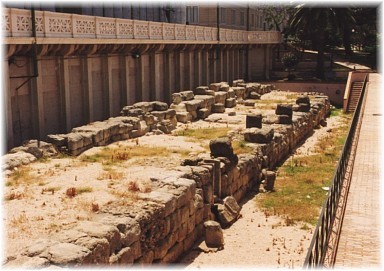
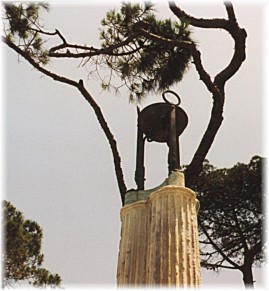
The walk from modern Reggio's train station to the museum is along the beautiful Lungomare. Along this shoreline, the walker passes the ancient Greek walls of Rhegion (above, picture left) as well as the Tripod Monument (above, picture right) celebrating the ancient Bruttium region's Greek heritage.
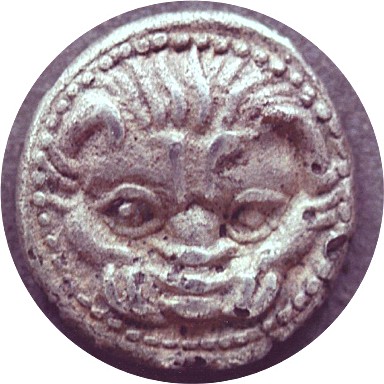
Rhegion, Silver Litra, 350-270 BCE. Obverse: Facing Lon's Head.
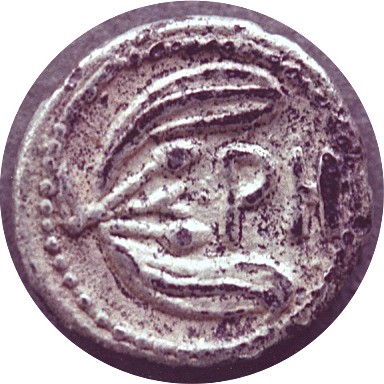
Converse: PH, Olive Sprig with 2 Olives [SNG Lloyd 691]
Q: Is the tripod one of the archetypal symbols of Bruttium?
A: Yes, but as the Lion's Head is more likely found on the coinage of Rhegion, the Tripod is most prevalent on the coins of Bruttium's other great city, Kroton. The silver Nomos with tripod, below, was minted about 475 BCE in Kroton. That the tripod is shown in incuse form may have to do with the fact that Pythagoras taught in Kroton. Rutter [Greek Coinages of Southern Italy and Sicily, 1997, p.18] has suggested: "...the representation on an incuse coin of two views of the same object, from front and back, may have been an attempt to realize in concrete form a confrontation of opposites of the kind that was characteristic of the Pythagorean system of thought." "...precisely Kroton and Metapontum [where Pythagoras taught and died] were the two cities where the incuse technique was especially firmly rooted..."

